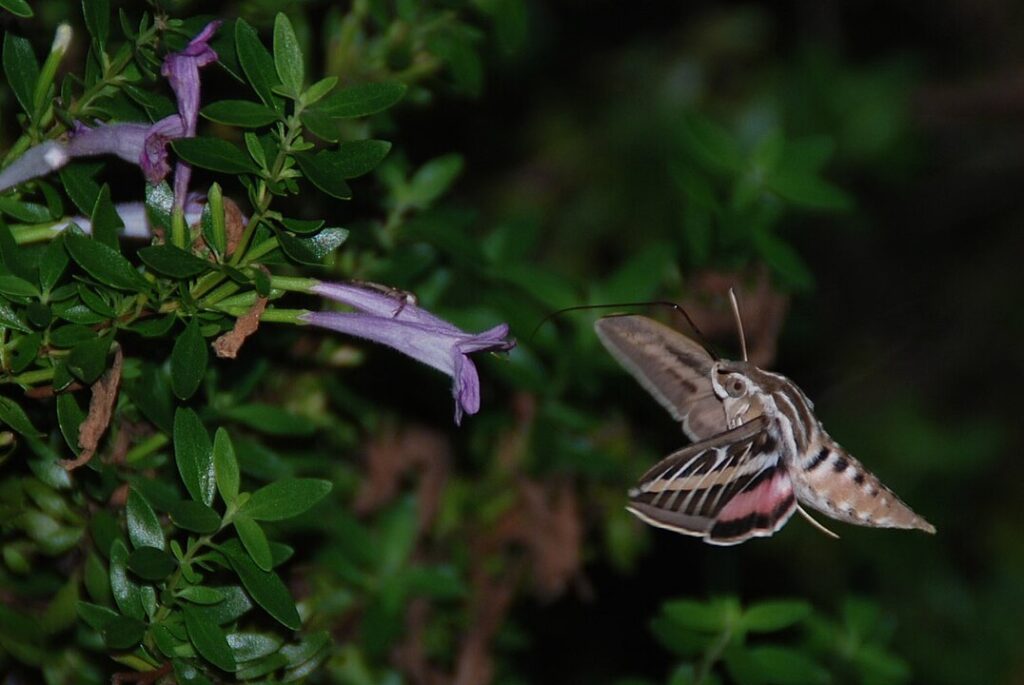
Hyles lineata (White-lined Sphinx Moth)
The Hyles lineata, commonly known as the White-lined Sphinx Moth, is a large moth species in the family Sphingidae, native to the Americas. Known for its rapid flight and striking appearance, this moth is often mistaken for a hummingbird due to its hovering behavior when feeding.
Description
The White-lined Sphinx Moth has a distinctive appearance with its long, slender body and broad, angular wings. The forewings are light brown with darker brown lines and white edges, while the hindwings are bright pink, bordered with black. The moth’s body is long and covered with fine scales, and it has a characteristic white line running down each side of its abdomen. Its wingspan ranges from 5 to 6 cm (2 to 2.5 inches). When in flight, it can resemble a hummingbird, flapping its wings rapidly and hovering over flowers.
Habitat and Distribution
Hyles lineata is found across North and South America, from southern Canada to Argentina. It is particularly common in regions with abundant flowering plants, including gardens, woodlands, and agricultural areas. This species is often seen in areas with a warm climate, as it prefers to feed on plants in bloom. During the summer, it migrates to different areas in search of nectar sources.
Behavior and Life Cycle
The White-lined Sphinx Moth has a unique and fascinating behavior. It feeds primarily on nectar from tubular flowers, such as those of honeysuckles and trumpet vines. It is known for its rapid, hummingbird-like flight, hovering in place to feed from flowers with long tubular corollas. The moth’s life cycle includes four stages: egg, larva (caterpillar), pupa (chrysalis), and adult moth. The caterpillars feed on a variety of plants, including species from the nightshade family (Solanaceae), such as tomatoes and potatoes.
Diet and Feeding Habits
The adult moth feeds on nectar from a wide variety of flowering plants, particularly those with tubular flowers that suit its long proboscis. It is an important pollinator for many plant species. The larvae (caterpillars) of Hyles lineata feed on the leaves of various plants, including members of the Solanaceae family, such as tomatoes and peppers. The larvae can cause damage to crops, especially in agricultural settings.
Conservation Status
Hyles lineata is not considered endangered, and it is quite common in many parts of its range. However, like many moth species, it can be affected by habitat destruction and the use of pesticides. Conservation efforts aim to protect natural habitats and reduce pesticide use to maintain healthy populations of pollinators like the White-lined Sphinx Moth.
